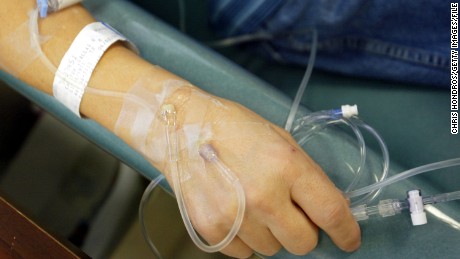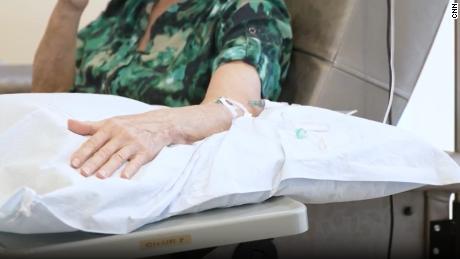Story highlights
- US liver cancer death rates rose even as rates for all cancers combined fell
- Many of the risk factors of liver cancer are preventable
(CNN)Death rates from liver cancer increased 43% for American adults from 2000 to 2016, according to a report released Tuesday by the US Centers for Disease Control and Prevention's National Center for Health Statistics. The increase comes even as mortality for all cancers combined has declined.
Liver cancer death rates increased for both men and women 25 and older, as well as white, black and Hispanic people. Only Asians and Pacific Islanders saw a decrease in mortality from liver cancer.
The rise in mortality doesn't mean that liver cancer is deadlier than before, according to Dr. Jiaquan Xu, the author of the report; the 10-year survival rate for liver cancer didn't change much. Rather, the increase in mortality means more people are developing liver cancer.
More than 70% of liver cancers are caused by underlying liver disease, which has risk factors such as obesity, smoking, excess alcohol consumption, and hepatitis B and C infection, said Dr. Farhad Islami, the scientific director of cancer surveillance research at the American Cancer Society.
"I think the main reason for the increase in liver cancer incidence and death rate in the US is the increase in the prevalence of excess body weight and hepatitis C virus infection in baby boomers," said Islami, who authored a study on liver cancer occurrence between 1990 and 2014.
Up until 1992, blood transfusions and organ transplants were not screened for hepatitis C, Xu said. According to the CDC, this was once a common means of hepatitis C transmission.
It is often years before a person living with hepatitis C develops liver cancer, which would account for an increase in incidence of the cancer among older individuals who received blood transfusions and organs before 1992. Liver cancer mortality was greatest in those 75 and older, followed by those 65 to 74 and 55 to 64, according to the new report.
The opioid epidemic might also be at fault, said Dr. Manish A. Shah, a medical oncologist at Weill Cornell Medicine and NewYork-Presbyterian. Hepatitis C, spread by sharing needles, drove elevated rates of liver cirrhosis, or scarring due to damage to the liver, in the 1990s and 2000s, Shah said. Cirrhosis increases the risk for liver cancer, although it is not clear why, he added.
Xu said he hopes people realize lifestyle changes can decrease their risk of developing liver cancer.
"Some of these liver cancer risk factors like obesity, diabetes and excess consumption of alcohol, those things can be prevented," he said.
Mortality by gender
Throughout the 16 years analyzed, the death rate of liver cancer for men was 2 to 2.5 times higher than it was for women, according to the report.
"There's a longstanding recognition that men have a greater risk of liver cancer than women," said Dr. Scott L. Friedman, dean for therapeutic discovery and chief of the division of liver diseases at the Icahn School of Medicine at Mount Sinai, although the reasons aren't clear.
Shah said that some risk factors for liver cancer, such as drug use and obesity, tend to affect more men than women.
Still, men and women saw similar increases in mortality -- 43% for men and 40% for women -- from 2000 to 2016.
"Once you have liver cancer, whether you're a man or women, your cancer survival rate is the same," Shah said.
Survival rates depend on how early the cancer is caught -- according to the American Cancer Society, localized liver cancer has a five-year survival rate of 31%; regional liver cancer that has spread to nearby organ has a survival rate of 11%; and distant liver cancer, which has spread further in the body, has a 3% survival rate.
Mortality by race
White adults had the lowest death rate from liver cancer of any racial group throughout the 16 years analyzed.
While there is no evidence that race influences the biology of cancer, nonwhite individuals are more likely to receive inadequate or unequal access to care, which might account for their overall increased mortality from liver cancer, Friedman said.
The only races whose mortality decreased were Asians and Pacific Islanders. Shah said that might be due to increased vigilance and screening for these races, since the incidence of liver cancer is known to be higher in these populations.
Mortality by state
The report also looked at differences in liver cancer mortality among US states.
Washington, D.C., had the highest liver cancer death rate in 2016, while Vermont had the lowest.
Friedman said this could be accounted for by differences among states in preventative screening and in treatment in underlying diseases, such as hepatitis C.
Islami stressed that the cost of hepatitis C treatment can create barriers to access that are exaggerated in states where the medication is not covered by health insurance.
But, he added, the differences in mortality among states are fairly small -- there are 10.8 more people per 100,000 who die from liver cancer in Washington, D.C., than in Vermont.





















